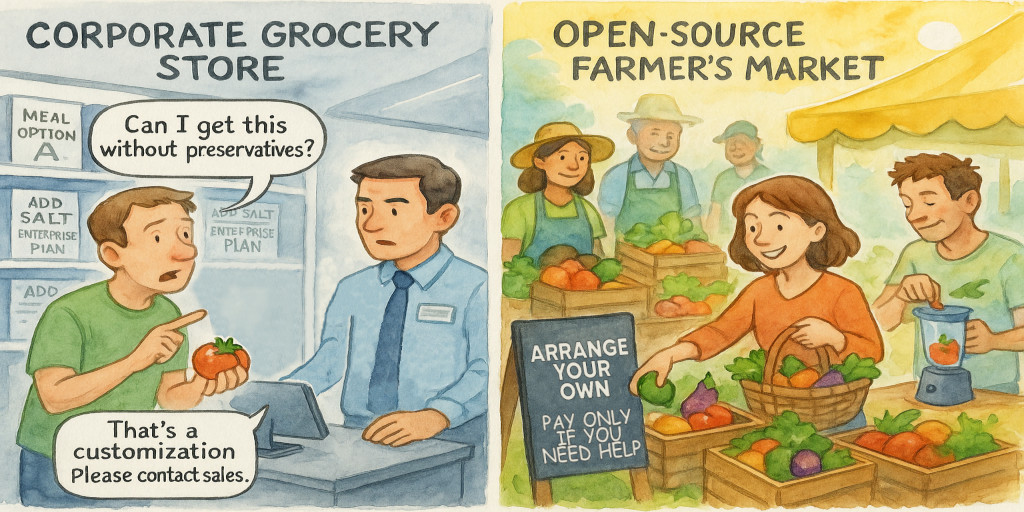Commercial Pain Points: Limited Customization
| Published: | Wednesday, August 6, 2025 |
| Author: | Daniel Patterson |
Introduction
One of the most frustrating realities of commercial software is how little control customers have over it, especially once they start needing features beyond what is provided out-of-the-box. For most businesses, it doesn't take long to run into this wall.
Let's say your team needs a small but critical change in functionality. With many commercial platforms, your first step is to contact the vendor, which is when you discover that what you're asking for requires a custom development project, and not a small one at that. Projects with large commercial vendors like these are usually priced at enterprise scales, with multi-month scoping, strict timelines, several team members, and heavy cost just to get on the roadmap; if you're lucky enough that they will take your case.
Worse yet, if you represent a smaller business without the budget for that kind of project, the fallback plan might be to hire a third-party developer with expertise in the software's ecosystem. However, even that path is full of dead ends. While many commercial platforms provide SDKs and APIs, they're frequently limited to cosmetic tweaks, basic integrations, or automation of trivial tasks. The underlying architecture, or the part you actually need access to, is locked down, turning this into a frustrating catch-22. The only people who can make truly meaningful changes are the original vendor, and they're only interested if you're ready to invest tens or hundreds of thousands of dollars.
This is how companies everywhere end up with expensive software that almost works for their needs, but never quite does. Meanwhile, you're stuck paying monthly fees per-user indefinitely, with no meaningful path to get exactly what your business requires.
Open Source is a Different World
Now contrast that with the open source model. When you choose an open source platform, the entire source code is available to you. That means you can modify literally anything. You don't need any permission, you don't have to wait in line, and you don't have to pay for any consultation or service plans just to ask if something could be accomplished (it can).
Here are only a few things you or your trustly local developer might decide to do at the drop of a hat.
- Change how a platform processes data.
- Tweak the UI of a popular application.
- Add an entirely new capability that's tailored to your own workflows.
Better yet, these changes can be made, to your specifications, down to the smallest single line of logic.
Even better than that is the upfront cost is typically zero. You can download the base version of the software for free, test it in your environment, and evaluate whether it meets your needs. Then, if changes are required, you pay once, often a modest fee, to a developer who makes the exact improvements you care about. No ongoing subscription; no per-user pricing; no limits imposed by the business model of a software vendor.
This freedom is more than just a technical advantage, it's a strategic one. Open source gives you control over your tools, your costs, and your roadmap so you're not held hostage by a vendor's priorities or pricing models. You decide what your software does, and how much you're willing to pay for it.
 werMake
werMake